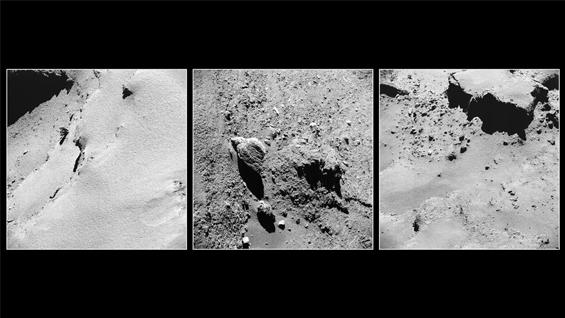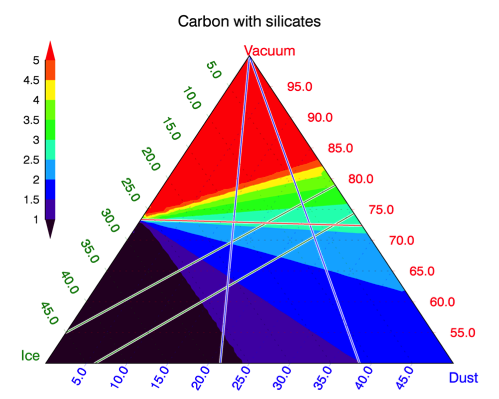According to the latest results of the radar CONCERT on Rosetta, comets are mainly composed of dust rich in carbonaceous material
Measurements of the Rosetta mission’s CONSERT experiment made it possible for the first time to observe the interior of a comet and to estimate the average composition of the nucleus. This decisive study shows that comets are mainly composed of dust rich in carbonaceous material. This work was published on March 7, 2017 in the MNRAS (Monthly Notices of the Royal Astronomical Society) Journal of the Oxford University Press1. It was conducted by a team in which French researchers from the Institut de Planétologie et d’Astrophysique de Grenoble (CNRS / Université Grenoble Alpes), the Laboratoire Atmosphères, Milieux, Observations Spatiales (CNRS / Pierre and Marie Curie University Versailles St-Quentin) and the Institut de Recherche en Astrophysique et Planétologie (CNRS / University of Toulouse Paul Sabatier) are strongly involved.

The CONSERT bistatic radar, installed on the Rosetta probe and on the Philae lander had explored the interior of a cometary nucleus, more precisely the small lobe of the nucleus of comet 67P/Churyumov-Gerasimenko, in November 2014. These exceptional measurements established (Kofman et al, Science, 2015)2 , from the speed of wave propagation in this medium, that the mean dielectric constant is (1.27 ± 0.5), which is only slightly higher than 1, the dielectric constant of a vacuum. This very low value indicates that the medium is extremely porous, as confirmed by its low density (of the order of 0.53 kg m-3, Sierks et al., 20153, Pätzold et al., 20164). Given the high dust/ice mass ratio of 2 to 6 (Rotundi et al., 20155 ), the estimated porosity is of the order of 80% (Kofman et al., Science, 2015).
Current studies rely on a more accurate interpretation of the dielectric constant of the core (close to 1.27) from laboratory measurements of the permittivity of ice (water, carbon monoxide and dioxide) and minerals and analogues of cometary materials (Brouet et al., 20166; Herique et al., 20027; Heggy et al., 20128). This analysis uses the formulas of dielectric material mixtures as well as density and dust/ice ratio estimates to show that the refractory fraction must have a low permittivity to explain the dielectric constant measured by CONSERT. These results make it possible to exclude that the cometary dust particles have an essentially mineral composition. The models proposed for the composition of the inside of the core allow us to affirm that the carbonaceous material is largely present, corresponding to up to 75% by volume in the composition of the dust.
These new results change the classical vision of a comet as a “dirty snowball”. They suggest that the target comet of the Rosetta mission (and probably other comets as well) has a considerable fraction of carbonaceous material in its dust. This conclusion significantly strengthens the hypotheses that the refractory component of comets, by its composition and structure, could have contributed to the emergence of life on Earth.

Note(s):
- Mon Not R Astron Soc (2016) 462 (Suppl_1): S516-S532
- Kofman W., et al., 2015, Science, 349, 6247, aaa0639
- Sierks H., et al., 2015, Science, 347, aaa1044
- Pätzold M., et al., 2016, Nature, 530, 63
- Rotundi A., et al., 2015 , Science, 347, aaa3905
- Brouet Y. et al., 2016, MNRAS, S1, 89
- Herique A. et al., 2002, Planet. Space Sci., 50, 857
- Heggy et al., 2012, ICARUS, 221(2), pp. 925–939
Further Resources
- Scientific Publication : Cosmochemical implications of CONSERT permittivity characterization of 67P/CG, MNRAS, 7 mars 2017
- CONCERT, Blog de l’ESA Rosetta
- Communiqué de Presse du CNRS-INSU
IRAP Contact
- Jérémie Lasue, Jeremie.Lasue@irap.omp.eu






